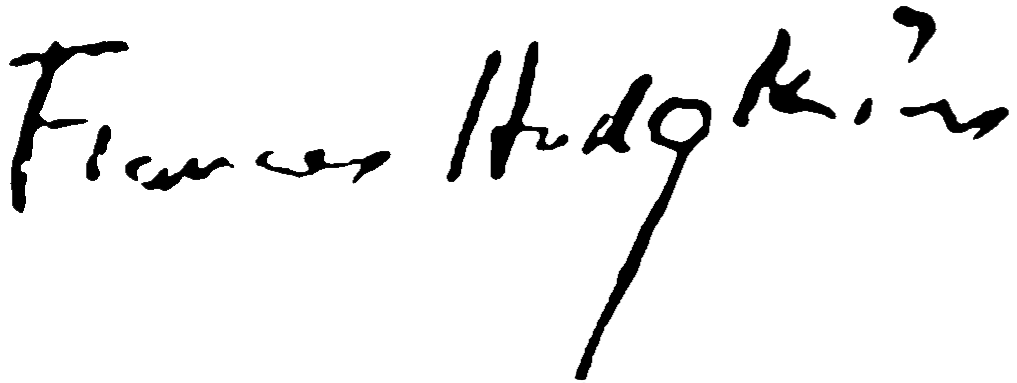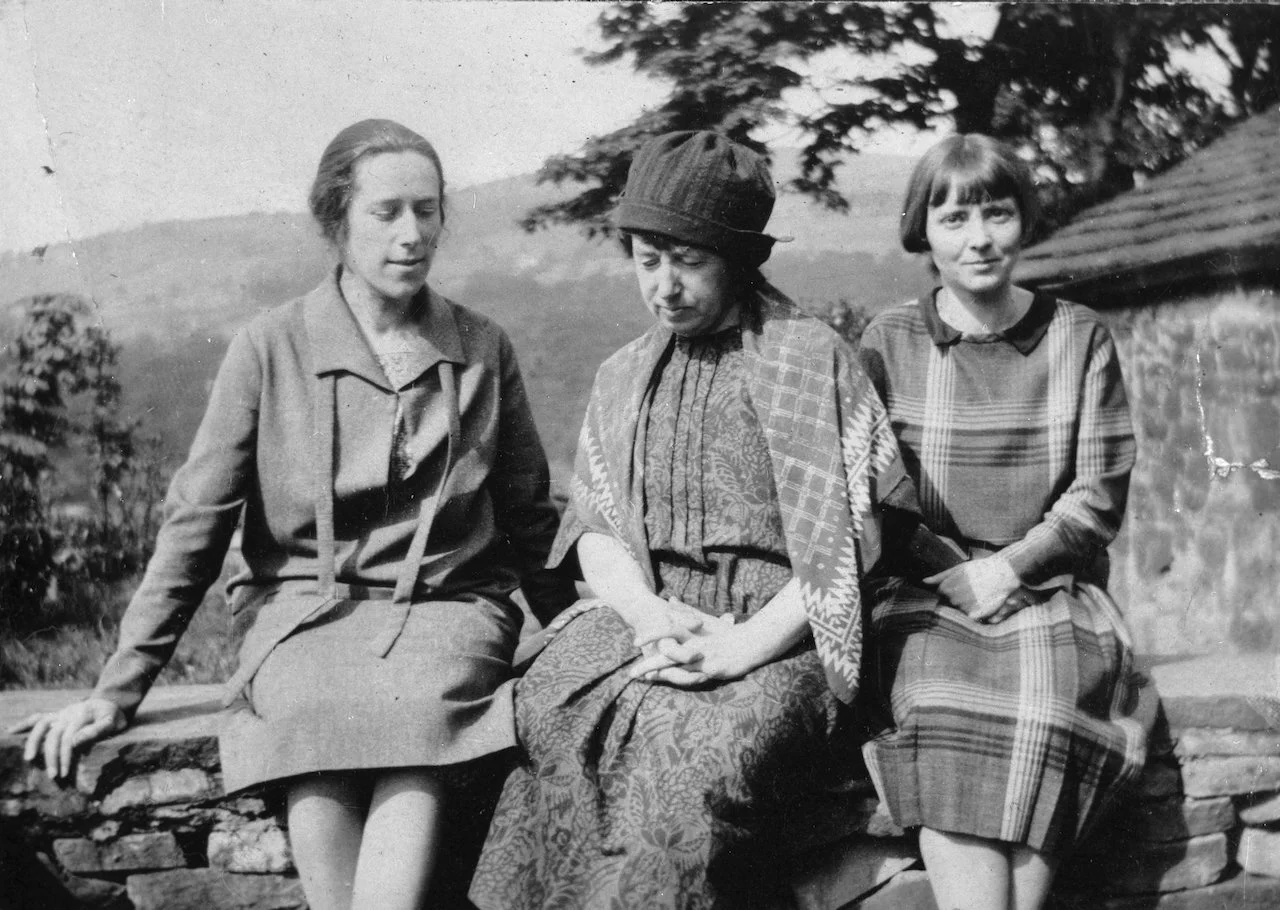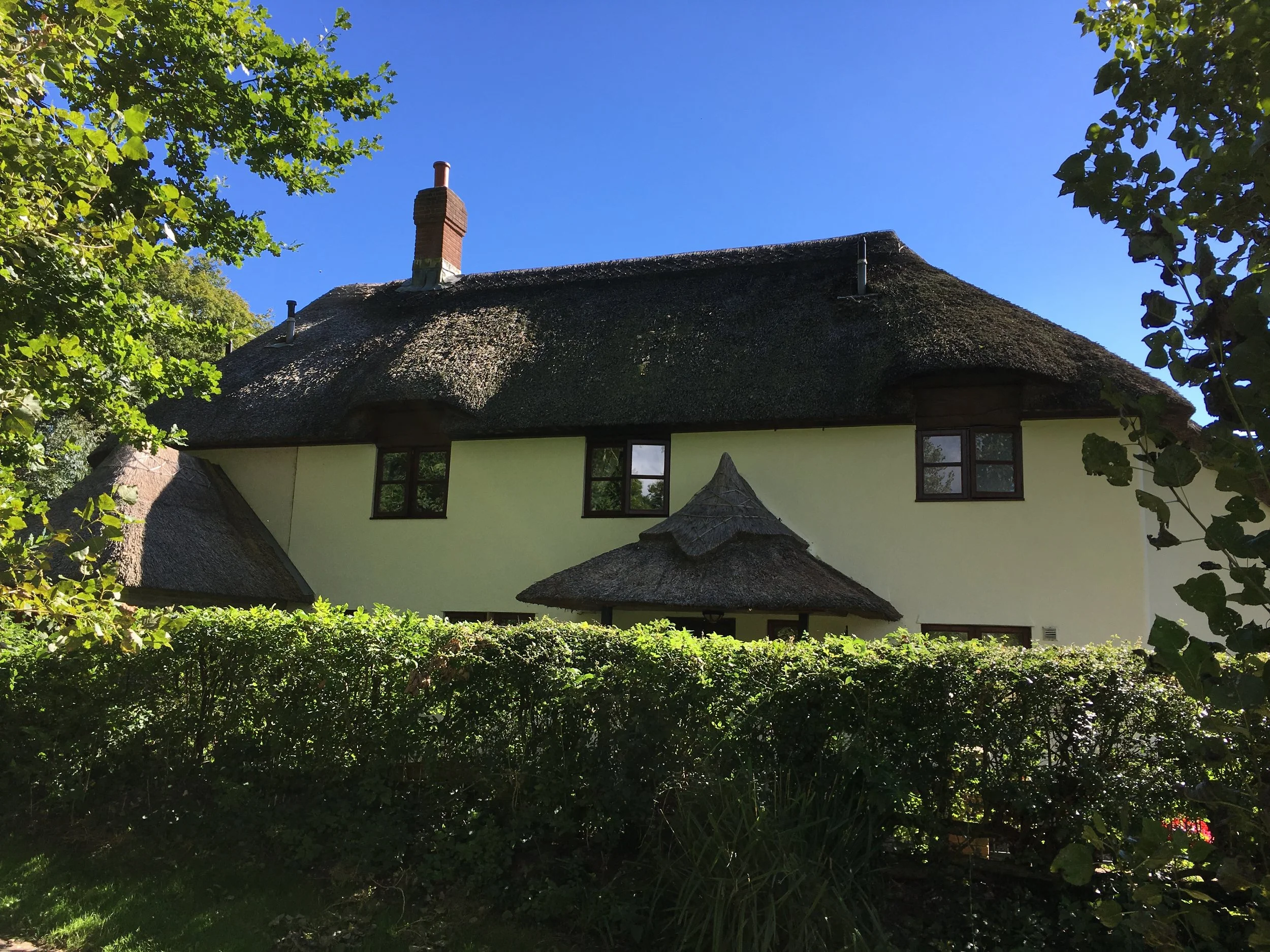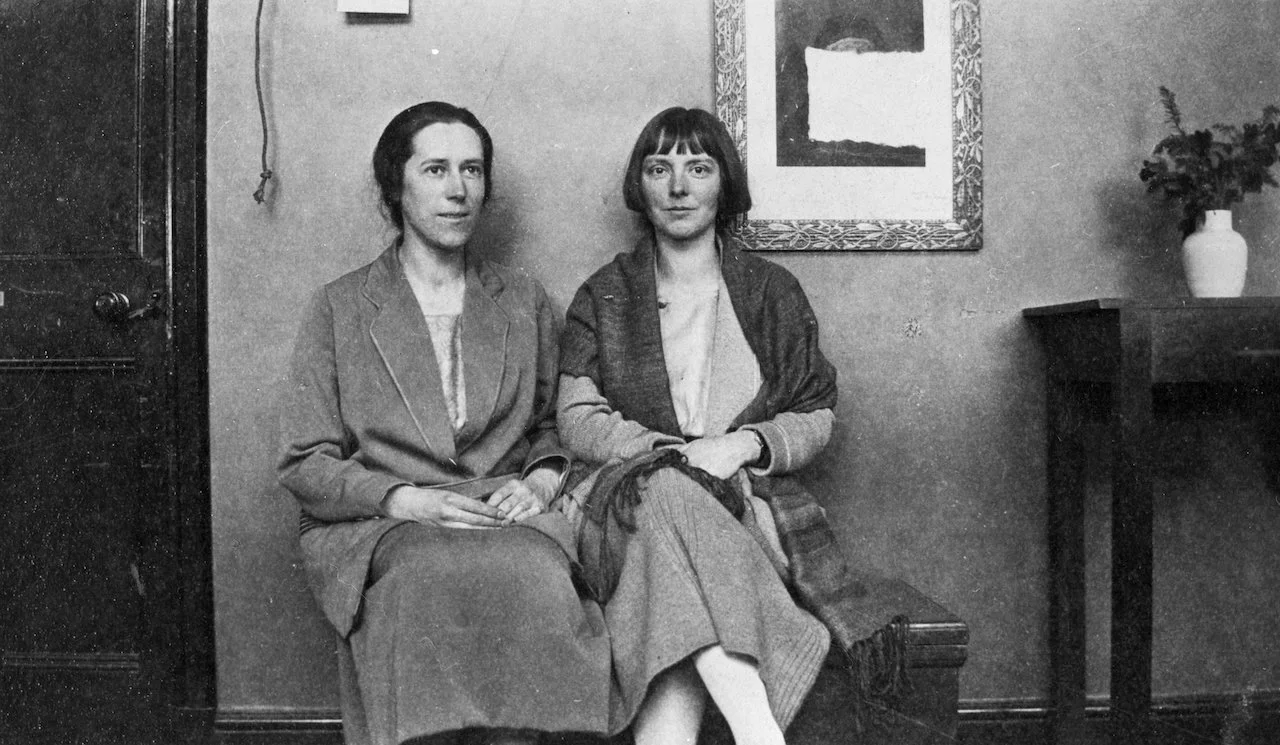From Frances Hodgkins to Jane Saunders. Studio Corfe Castle Dorset. Jan 4th 1944
Hannah Ritchie, Frances Hodgkins & Jane Saunders c. 1925, Katherine Ritchie Collection. Alexander Turnbull Library, N.Z.
I am afraid I haven’t left time to write to her, that if she [Elizabeth] really wishes to possess the Abandoned Cottage I will accept £5.5 for it & please not to tell friends how much she paid for it. I have had to give up selling privately and no longer am on Contract as I find it less of a tie selling on commission. Also the galleries prefer it. I am hoping 1944 will see me in better shape & form – good production years – etc – ahead. I find budgeting & house work & all the lesser evils of housekeeping alone – the very d----l. I think you & E have got a small section of the cream of my work, such as it is. They are vintage pieces – 1943. I am happy to leave them with you. Be Happy. Lots of good, all good things for 1944 to you both.
Lovingly Frances
During the Second World War Frances Hodgkins was living in Corfe Castle village which was located in the key movement corridor for the thousands of British, American and Canadian troops and their heavy vehicles which were amassing along the Purbeck coastline in preparation for Operation Overlord – the D-Day landings in Normandy. Local farms were converted into military camps and firing ranges and the local workforce turned towards supporting the war effort. The neighbouring village of Tyneham was requisitioned and evacuated never to be reinhabited.
Heavy tanks, lorries and armoured vehicles rumbled through Corfe Castle’s narrow streets shaking its medieval foundations to the core which, to her dismay, caused the roof of Hodgkins’ Wesleyan Chapel studio to slide into the garden. Describing the cacophony of disruption she wrote to Dorothy Selby in July 1943
I have had a nasty shock. The stone roof of the Studio fell off, suddenly, 2 Sunday evenings ago, gave me a fright but blessedly no injury to self or anyone else – near shave, I had just left Studio. Heavy tank traffic helped to loosen the heavy stones & they just slid off the roof in one piece into the garden so the old place is cleared & half emptied. A horrible vacuum waiting for workmen to rebuild & put the place in order. A terrible famine of labour & we may not be able to get anyone.
As most workmen in the area were supporting the allied war effort, Hodgkins was unable to secure repairs. She covered her possessions with tarpaulins and decamped to the nearby village of Cerne Abbas in September where she had organised to meet her longtime friend and painting companion, Dorothy Selby.
The New Inn, Cerne Abbas
Jonathan Gooderham, 2016
Staying at The New Inn, a coaching inn dating back to 1725, the pair quickly found inspiration in their new surroundings. They explored the village’s ‘haughty’ houses, lovely gardens, duck ponds, a 14th century monastic Tithe Barn which contrasted with a row of dilapidated cottages and the gentle river Cerne wending its way through the village past the corn mill and miller’s house. They also admired the famed Cerne Abbas Giant carved into the into the rolling chalk downs.
Mill Lane, Cerne Abbas
Jonathan Gooderham, 2016
Wandering through the village with sketchbooks in hand, Hodgkins found new material for a group of gouaches she would later complete in her repaired Corfe Castle studio, destined for exhibition at the Lefevre Gallery in London.
In Cerne Abbas, she recovered her nerves:
“A village completely anti-war. No housekeeping, queuing or shopping. Food good but scarce. Plenty of cider. Lovely walks, etc.”
Their favourite spot appeared to be Cocker’s Tea Rooms, which Hodgkins affectionately described as “the cat’s whiskers.”
Among the works completed in this period were Abandoned Cottage No. 1 and Abandoned Cottage No. 2, two 1943 gouaches notable for their unusually dense application of gouache—what Hodgkins described to her dealer Duncan Macdonald as almost verging on the impasto of oil.
Painted from a compilation of sketches as was her style at the time, these works are difficult to locate geographically. In the present gouache Abandoned Cottage No. 2, reflections of a building in foreground water may suggest the duckpond in Abbey street, while the inclusion of another cottage nestled among trees and shrubs hints at a setting near the riverside mill at the end of Mill Street.
Abandoned Cottage, Cerne Abbas No. 2
Watercolour & gouache 34 x 46 cm
Signed Frances Hodgkins lower left, dated 1943
Private Collection, Auckland, N.Z.
Rich in atmosphere, this painting uses deep blues and warm oranges to suggest a moment of transitional light. Rather than adhering to strict realism, Hodgkins prioritises mood and expression, using colour, form, and line to capture the essence of this bucolic scene. Painting from quick sketches gave her complete freedom over her palette, allowing her to merge motif and landscape in a seamless interplay of representation and abstraction. The result is a composition that reflects both the artist’s personal vision and modernist sensibility—hallmarks of her mature style.
The first owner of Abandoned Cottage No. 2 was her former pupil, patron and friend, Jane Saunders. Frances wrote to her in November 1943
I have some notes for future masterpieces brought back from my 3 weeks at Cerne Abbas… If you can be patient I will send you a few to choose from. When? I can’t say but soon before Christmas.
Hannah Ritchie and Jane Saunders c. 1925
Katherine Ritchie Collection. Alexander Turnbull Library, N.Z.
Jane Saunders first met Frances Hodgkins in Montreuil in 1911. Along with her partner at that time, Hannah Ritchie, she attended Hodgkins' summer school in 1912 at Saint-Valery-sur-Somme and again in 1922. Their connection grew into a lifelong friendship. The two Manchester based schoolteachers later arranged for Hodgkins to teach ‘a short course of lessons’ at Manchester High School for Girls and secured her employment designing textiles at Cresswell’s Calico Printing Company in 1925. Their financial and emotional support was vital to Hodgkins throughout her career.
Hodgkins painted both women multiple times, most iconically in the oil Double Portrait “Friends” (1922-5) now held in the Hocken Collections, Uare Taoka o Hākena, University of Otago. The work was purchased through Leicester Galleries from Jane Saunders by Dr Charles Brasch.
Double Portrait “Friends” 1922 – 23
Oil on canvas 61 x 77 cm
Signed Hodgkins lower left
Hocken Collections, Uare Taoka o Hākena, University of Otago






